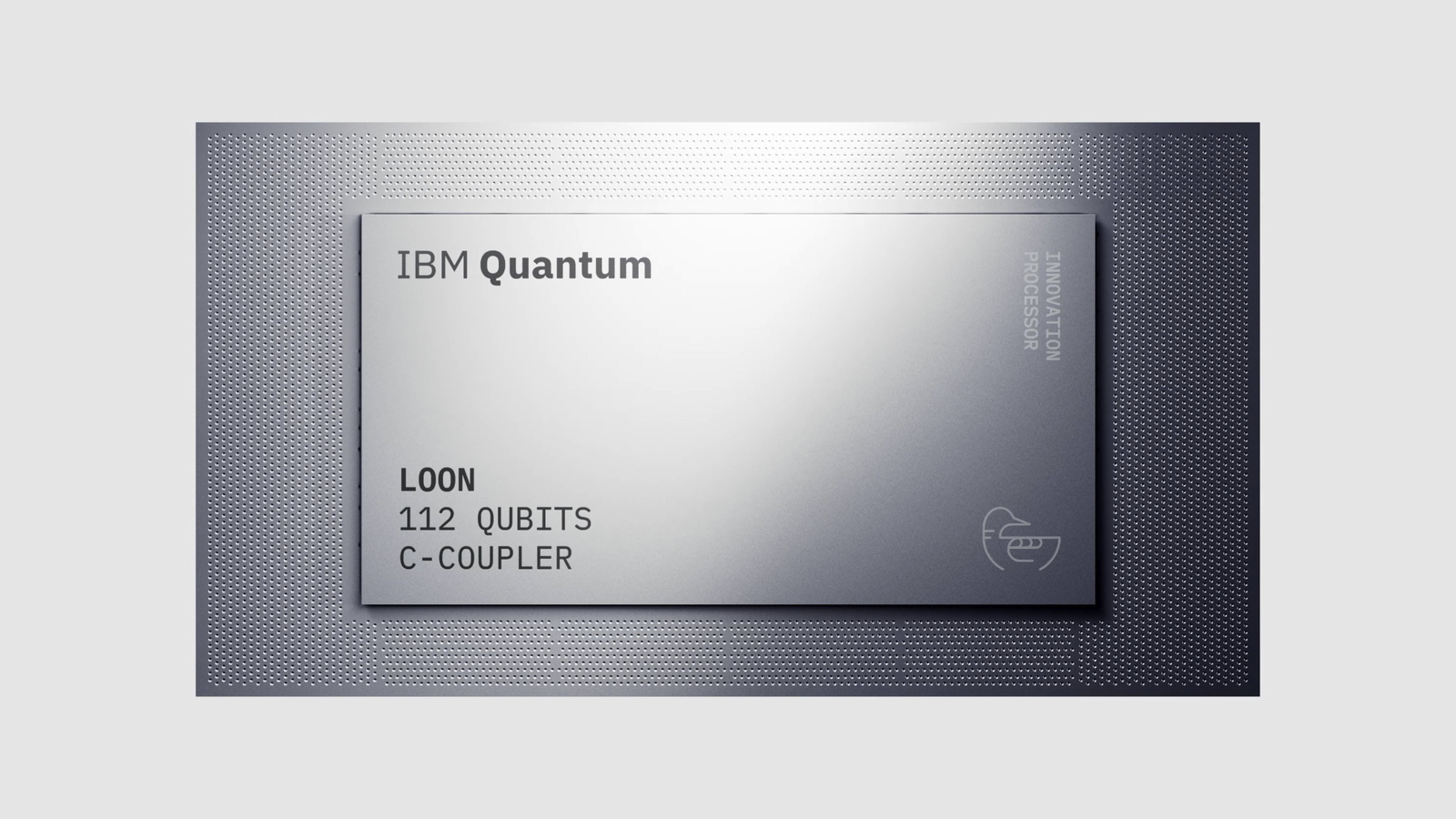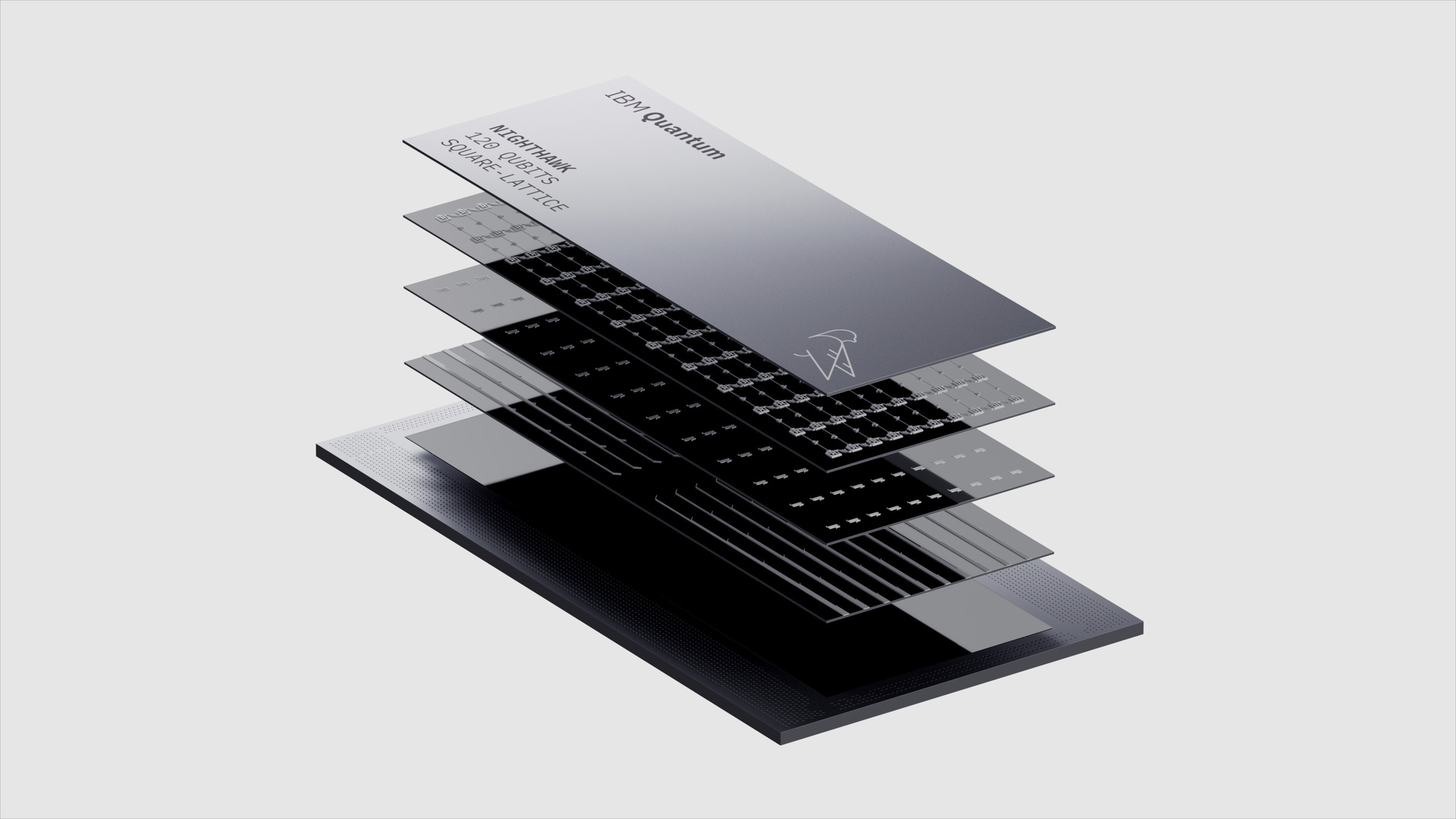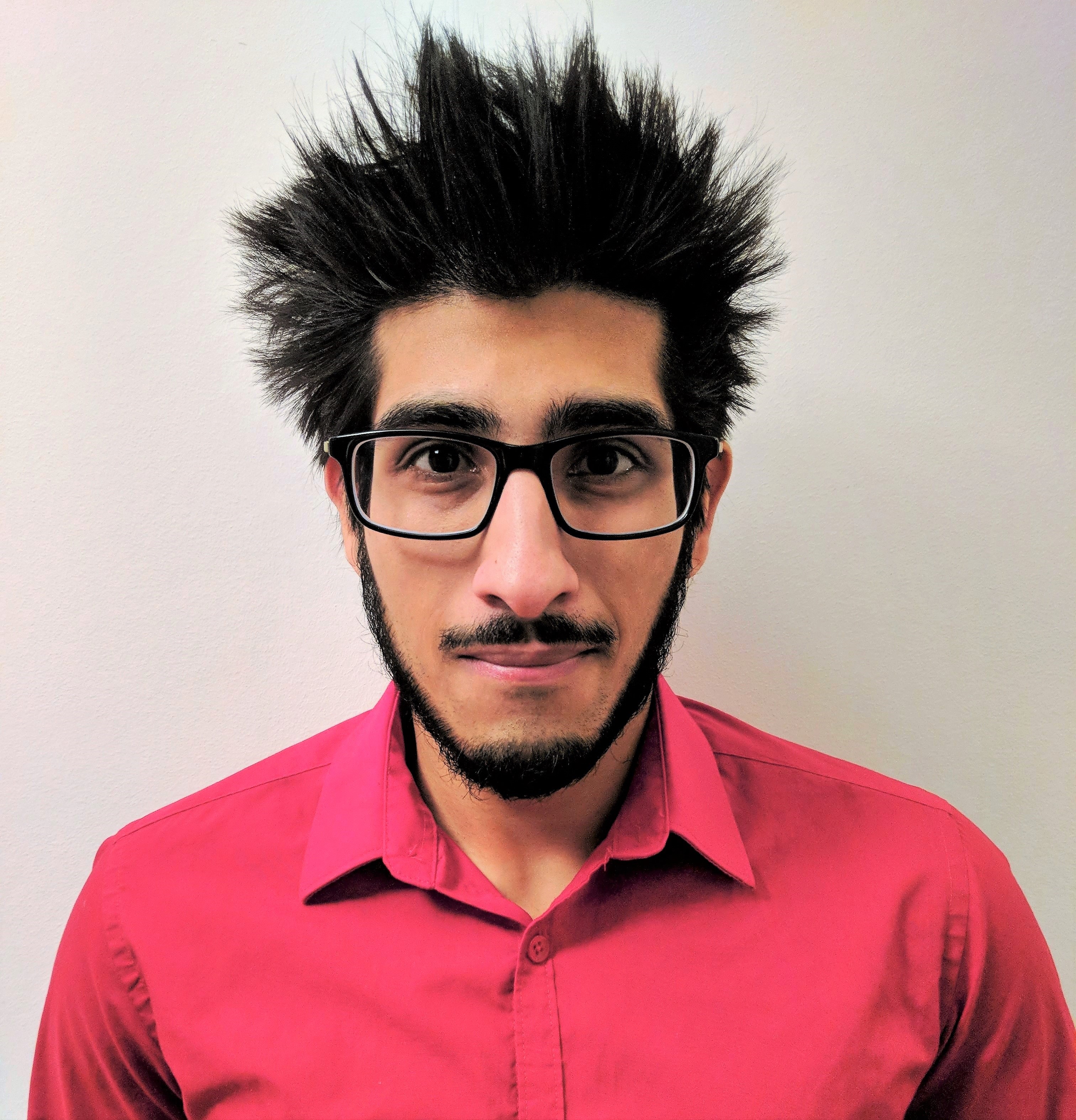IBM unveils two new quantum processors — including one that offers a blueprint for fault-tolerant quantum computing by 2029
IBM has released two new complex quantum processors alongside a new framework that would allow us to track the first demonstration of quantum advantage.

Scientists at IBM have created two new quantum processing units (QPUs) that they say will take them a step closer to achieving quantum advantage by next year — and a fully fault-tolerant quantum computer by 2029.
The first processor, called IBM Quantum Nighthawk, is a 120-qubit chip that can process quantum calculations that are 30% more complex than anything the company's previous QPU (R2 Heron) could handle.
The company also launched another processor, IBM Loom, with 112 qubits, which scientists say includes all the elements required for full fault tolerance — quantum computers that self-detect and correct all errors in real time.
New quantum processors
Nighthawk enables each of the 120 qubits in the processor to connect with its nearest four neighbors in a square lattice structure, thanks to 218 improved tunable couplers — components that govern connections between individual qubits on the chip. This represents a 20% improvement in the number of couplers in the previous Heron processor.
This architecture will enable scientists to explore problems that require 5,000 two-qubit gates — fundamental entangling operations required for quantum computations.
According to IBM representatives, the company hopes that future versions of Nighthawk will be able to deliver up to 7,500 and 10,000 gates by the end of 2026 and in 2027 respectively. Then, in 2028, IBM scientists plan on creating Nighthawk-based systems with up to 1,000 qubits connected using long-range couplers to achieve 15,000 two-qubit gates.

Loom, meanwhile, is a smaller chip with just 112 qubits that IBM scientists say demonstrates all the hardware elements of fault-tolerant quantum computing. These technologies are engineered to address the extremely high failure rate in qubits — a field known as quantum error correction (QEC). QEC is the main reason why quantum processors are getting more sophisticated and not simply larger in terms of qubit count.
Get the world’s most fascinating discoveries delivered straight to your inbox.
In December 2023, for example, IBM scientists built a massive 1,000-qubit chip, named Condor, but its much smaller 113-qubit cousin, Eagle, was deemed the more exciting prospect from a research standpoint, given its error rate was five times lower. The same can be said for Nighthawk compared with Loom.
IBM Quantum CTO Oliver Dial told Live Science that the scientists needed new features in the processors to implement the error correction codes and the couplers they intend to use in the long term. This includes six-way connections, which allow a qubit to be connected with up to six of its neighbors, rather than the four in the latest QPU. They also needed more layers of routing on the surface of the chip, as well as longer couplers, as well as "reset gadgets" that reset the qubit to the ground state from the excited state.
"With Loon, for the first time, we test all these features together on a 112-qubit device," Dial said. "However, for it to function as a fault-tolerant memory, every one of the 112-plus copies of these features on the chip need to work extremely well. While it's the result we're hoping for, realistically, yield may be low at first on this complex of a device. It's intended to let us iron out problems and learn in advance of Kookaburra next year."
Kookaburra will be another proof-of-concept processor, expected in 2026, that IBM representatives say will be the first modular-designed QPU designed to store and process encoded information — combining logic operations with memory.
Reaching quantum advantage and beyond
In addition to launching two new QPUs, IBM has established a quantum advantage tracker. Quantum advantage is when a quantum computer can demonstrate problem-solving beyond the means of a classical supercomputer.
Demonstrating quantum advantage is difficult because classical computers can't easily verify or replicate the problems that are being tackled by quantum systems. The first three challenges launched as part of the tracker are "observable estimations," "variational problems" and "classically verifiable problems."

The company also delivered an update on the fabrication of quantum processors on a 300mm (12 inches) wafer. This new format, a large disc-shaped semiconductor that reflects light in rainbow colors, halves the time needed to build each processor, while also achieving a 10-times increase in the physical complexity of the quantum chips.
To build these wafers, long cylinders of silicon are sliced into thin disks, with engineers using software to design electric circuits. Automated machines then etch these circuits into the surface of the silicon, deposit new metals and treat the wafers, resulting in a rectangular grid of computer chips on the disk. Engineers fabricate multiple wafer types and then complete additional processing steps, before these are layered and connected in a 3D stack, and hooked up to control electronics.
IBM scientists hope to deliver their first fault-tolerant quantum computing chip, called Starling, by 2029, with a monstrous 2,000-qubit Blue Jay chip set to be released by 2033, according to the company's quantum roadmap.

Keumars is the technology editor at Live Science. He has written for a variety of publications including ITPro, The Week Digital, ComputerActive, The Independent, The Observer, Metro and TechRadar Pro. He has worked as a technology journalist for more than five years, having previously held the role of features editor with ITPro. He is an NCTJ-qualified journalist and has a degree in biomedical sciences from Queen Mary, University of London. He's also registered as a foundational chartered manager with the Chartered Management Institute (CMI), having qualified as a Level 3 Team leader with distinction in 2023.
You must confirm your public display name before commenting
Please logout and then login again, you will then be prompted to enter your display name.
